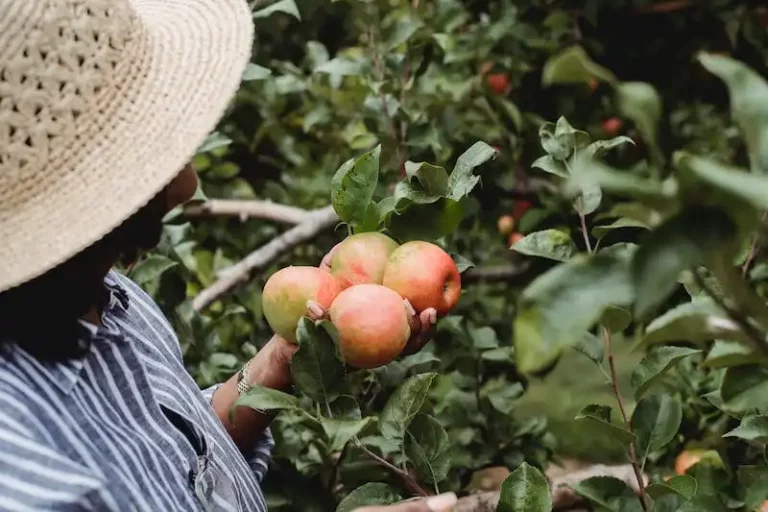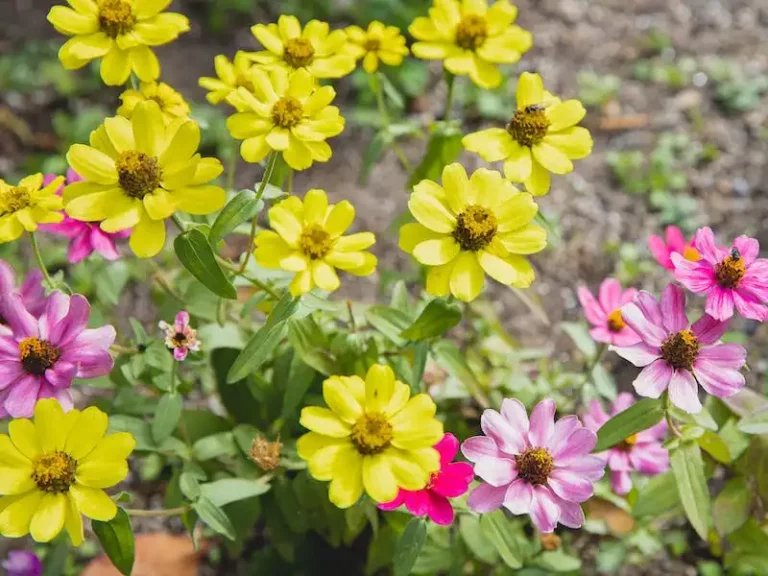If you are a fan of pomegranates like me, then you know that not all pomegranates are created equal. There is a wide variety of pomegranate trees and each offers a different yield and flavor. When choosing which type of pomegranate to plant or buy, it is important to consider factors such as growth, size, taste, and hardiness.
Some pomegranate trees are known for their higher yield of seeds, making them perfect for juicing or picking for a healthy snack. Others have smaller trees or slower growth, but their variety offers a unique flavor that is worth trying. The variety of pomegranate trees available today is vast, and each offers its own unique qualities.
One popular variety is the ‘Wonderful’ pomegranate, which is known for its large size, sweet taste, and heavy yield. It is one of the most common types of pomegranates and is widely grown in California and along the coast. Another popular variety is the ‘Chaterskaya’ pomegranate, which has a lighter color and a slightly smaller size. It is favored by many for its wonderful taste.
When choosing a pomegranate tree, it is important to consider your local climate and soil conditions. Pomegranate trees are sensitive to frost, so if you live in a colder region, you will need to choose a frost-sensitive variety or plant your pomegranate tree in a protected area. It is also important to choose a variety that is resistant to diseases such as anthracnose, which can cause the trees to wither and die.
Overall, pomegranates are a wonderful addition to any garden or orchard. Their beautiful flowers and tasty fruits make them a delight to grow and enjoy. So, whether you are a seasoned pomegranate grower or just starting out, there is a pomegranate variety out there for you.
Pomegranate Variety
When it comes to pomegranate trees, there is a perfect variety for everyone. With different types of pomegranates available, each with their own unique qualities and characteristics, it’s no wonder they are such a popular agricultural fruit.
One of the most popular varieties of pomegranate is the Parfianka. Known for its sweet and tart flavor, this variety has dark red, soft seeds and a lighter skin color. It not only tastes delicious, but the Parfianka also has beautiful flowers that bloom earlier compared to other types of pomegranates. However, it is worth considering that Parfianka pomegranates are frost-sensitive and may require additional protection.
Another exciting variety is the Desertnyi, often called the “Velvet Satin.” This pomegranate has a lighter skin color and softer seeds, making it a favorite among those who prefer a more delicate texture. Desertnyi pomegranates have a sweet-tart flavor that many find irresistible.
The Chaters pomegranate is known for its larger size and high yield. These pomegranates have a sharp caliper and a vibrant red color. The Chaters variety does well in hot climates and is resistant to anthracnose, a fungal disease that can cause loss of fruit.
If you’re looking for a pomegranate variety that is both sweet and tart, the Ruby variety is a great choice. With a rich red color and a balance of sweetness and tartness, these pomegranates are perfect for enjoying both fresh and in various recipes.
With so many different types of pomegranates to choose from, it’s important to consider the growth habit, disease resistance, and flavor profile of each variety before making your selection. Whether you prefer a sweeter or tarter taste, there’s a pomegranate variety out there that is perfect for you!
Different Types of Pomegranates
Pomegranates are fruit-bearing trees that come in various types. While they are typically known for their dark red skin and ruby seeds, there are actually different varieties available. One popular variety is the Parfianka, which is small and has a tartness that many people enjoy. Another variety is the Ambrosia, which has a lighter skin and is softer in texture.
When choosing pomegranates, it is important to look for ones that are healthy and free from disease. Some types, like the Assassin and the Desertnyi, are more resistant to diseases such as anthracnose alternata. These diseases can cause damage to the fruiting trees and hinder the growth of the pomegranates.
While the outside appearance of pomegranates may vary, the inside is typically the same. The seeds are the perfect part to eat, and they are surrounded by a velvet-like casing called the aril. Some pomegranates have pistils that are darker in color, while others have lighter orange-red colors. The hardness and tartness may also differ between varieties.
In recent years, there has been a focus on preserving different types of pomegranates through germplasm banks. These banks store seeds and other plant materials to ensure the diversity of pomegranate varieties for future generations.
| Types | Description |
|---|---|
| Parfianka | Small and tart |
| Ambrosia | Lighter skin and softer texture |
| Assassin | More resistant to diseases |
| Desertnyi | Resistant to anthracnose alternata |
When picking pomegranates, it is important to consider factors such as the taste, freshness, and season. Some people prefer a more tart flavor, while others may enjoy a sweeter taste. Additionally, different varieties may be available during different seasons, with some being more abundant in the winter and others in the summer.
In conclusion, there are different types of pomegranates available, each with its own unique characteristics. Whether you prefer a smaller, tart variety like the Parfianka or a lighter-skinned, softer variety like the Ambrosia, there is a pomegranate out there for everyone to enjoy.
Dead to Me
Pomegranates are a popular fruit that have been cultivated for thousands of years. Most pomegranates are orange-red in color and have a thick, leathery skin. One variety, called the desertnyi, has pink tips on its flowers and is better for growth in arid conditions. Pomegranates are also known for their disease resistance, making them a great choice for those looking for a low-maintenance fruit tree.
When choosing pomegranates, it’s important to look for those with a healthy label and no signs of disease. Pomegranates can be used for juicing or eaten fresh, though the juice from certain varieties like the parfianka is sweeter and tastier. Some growers prefer to use pomegranates with a higher light caliper, as these tend to yield more fruit.
There are a few considerations to keep in mind when picking pomegranates. The skin should be firm and free of soft spots or blemishes. The fruit should feel heavy for its size, indicating that it is full of juicy seeds. The best time to harvest pomegranates is when they are fully ripe but still on the tree. If they are left too long, the seeds may begin to wither and the fruit can become infected with diseases like anthracnose.
Pomegranate trees can be prone to injury, so it’s important to handle them with care. Their branches are delicate and can break easily, causing the tree to lose valuable fruit. It’s also important to avoid overwatering or under-watering pomegranate trees, as this can lead to root rot or drought stress. Pomegranates thrive in Mediterranean climates where the winters are cool and the summers are hot and dry.
In conclusion, pomegranates are a wonderful fruit with many health benefits. They are easy to grow and provide a bountiful harvest. Whether you’re juicing them or eating them fresh, pomegranates are a tasty addition to any meal. So next time you’re shopping for fruits, why not give pomegranates a try? You won’t be disappointed!
Wonderful Pomegranates
Pomegranates are charming flowers that have a special place in the world of fruit. For many, the word “pomegranate” seems to be synonymous with the perfect fruit. There are various types of pomegranates grown around the world, each with its own unique characteristics and flavors. Among them, Wonderful pomegranates are considered to be one of the better types.
Wonderful pomegranates have a deliciously sweet and tart flavor that is loved by many. The fruit is typically larger in size and has a softer, lighter skin. It is said that the caliper of a Wonderful pomegranate is higher than that of other types, making it appear even more attractive. When you cut open a Wonderful pomegranate, you will find beautiful orange-red or pink seeds that are juicy and bursting with flavor.
Wonderful pomegranates are often used for their juice, which is both tangy and refreshing. This variety is also known for its excellent germplasm, making it a popular choice among growers. Wonderful pomegranates are typically frost-sensitive and may not yield as much fruit as other types – though results can vary depending on planting and agricultural considerations.
For those who love pomegranates, choosing the perfect variety can be a delightful challenge. Some may think that the tartness of a pomegranate is caused by the seeds, but it is actually the fruiting body itself that gives it its unique flavor. While Wonderful pomegranates may seem similar to other types like Ambrosia, Satin, or Ruby, they each have their own distinct qualities and taste.
Wonderful pomegranates have been grown for many years and have brought joy to countless individuals. They are not only delicious but also come with numerous health benefits. The antioxidants found in pomegranates are believed to have various health advantages, making these fruits a great addition to any diet.
Whether you enjoy them for their incredible taste or their health benefits, Wonderful pomegranates are a true gem. Their dark, velvet-like skin and juicy seeds make them a feast for the eyes and the taste buds. So, the next time you come across a Wonderful pomegranate, be sure to savor every bite of this delightful fruit.
In conclusion, Wonderful pomegranates are a special variety that stands out among other types of pomegranates. Their unique flavor, beautiful appearance, and health benefits make them a favorite choice for many fruit lovers. Whether you enjoy them fresh, as juice, or in various dishes, Wonderful pomegranates are sure to impress!




